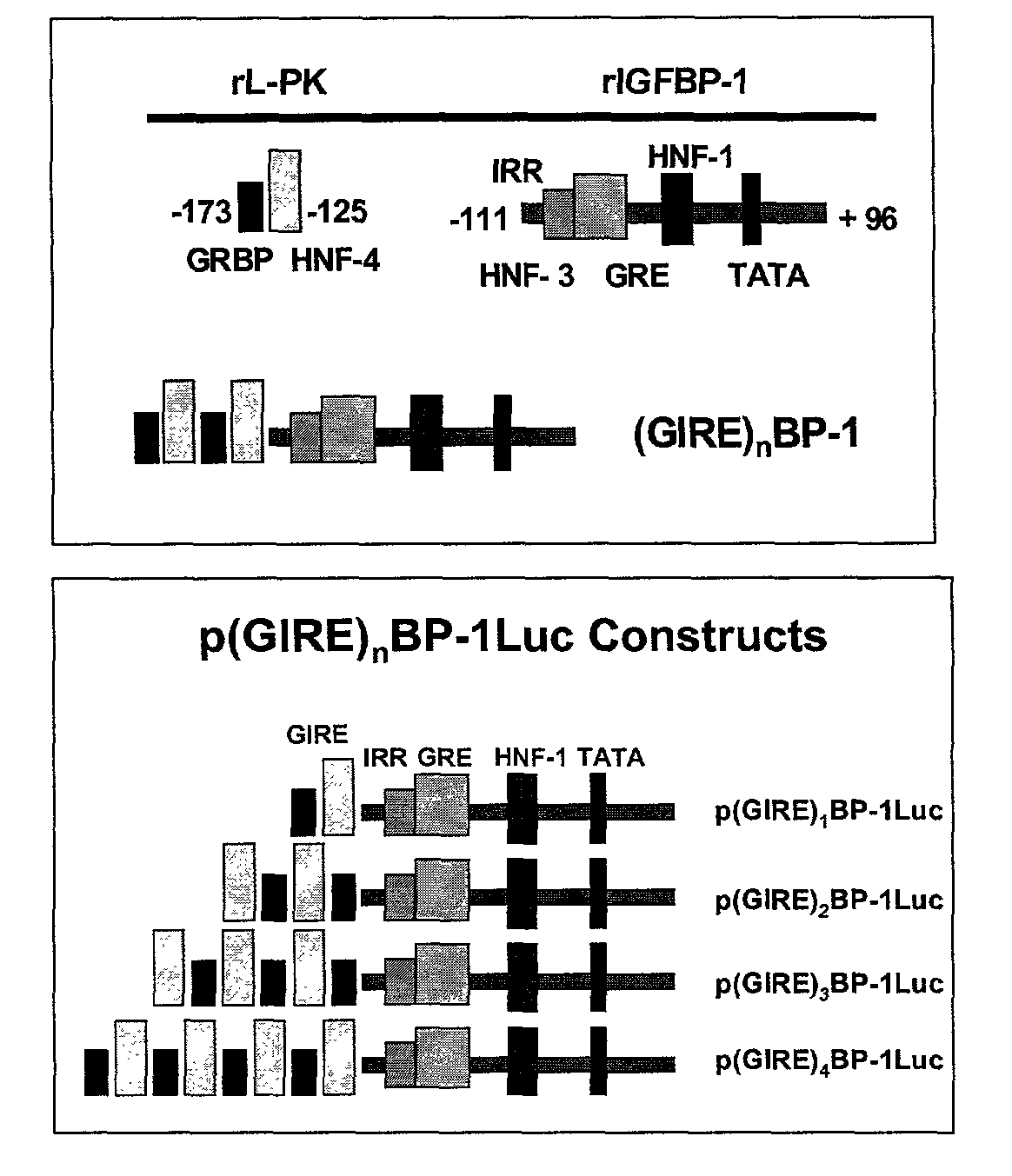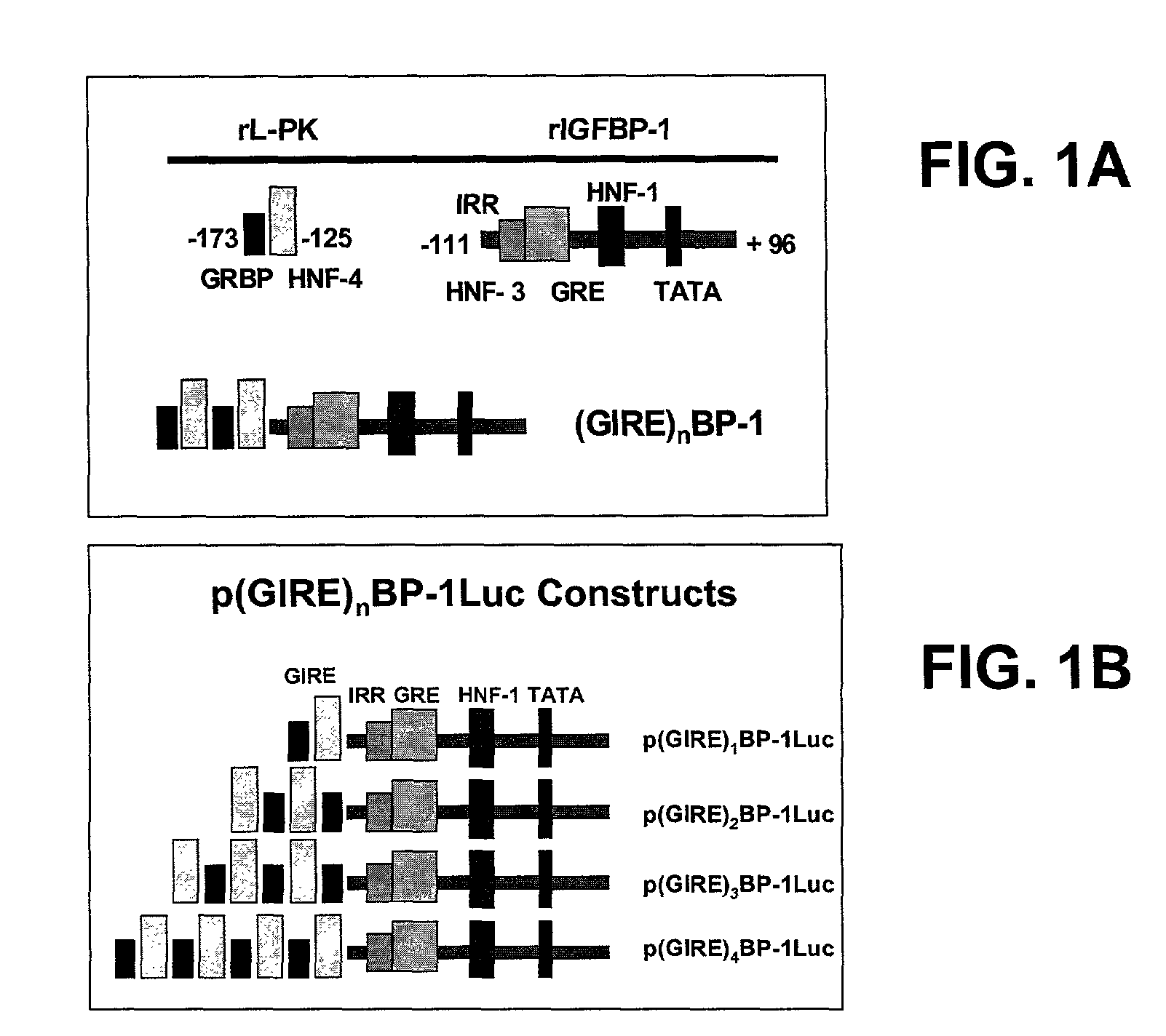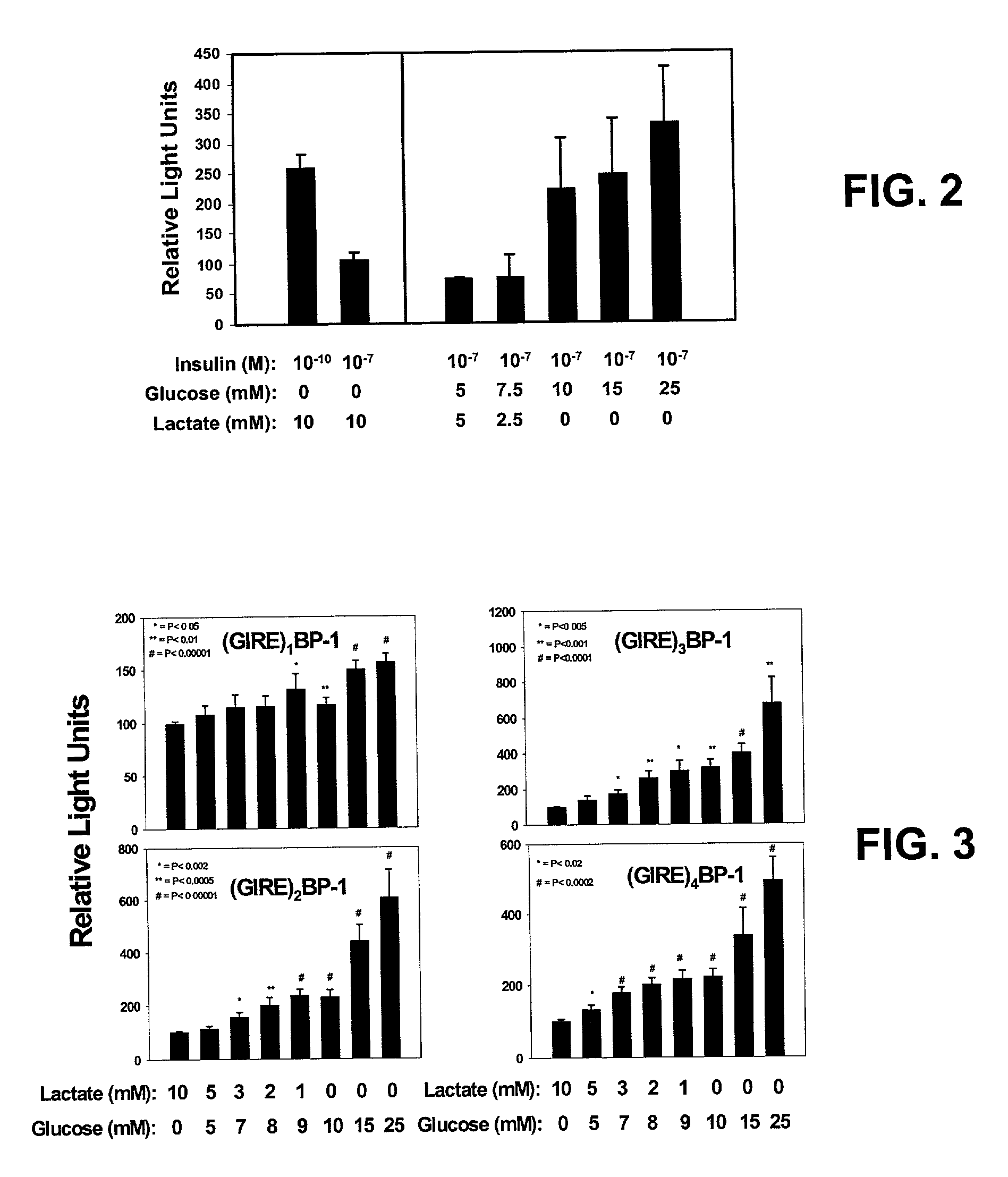Glucose sensitive regulator of insulin transcription
a transcription regulator and insulin technology, applied in the field of glucose sensitive regulator of insulin transcription, can solve the problems of insufficient insulin production, inability to regulate transgenic insulin production, and difficult transfer of these regulatory mechanisms to in vivo models, so as to reduce protein catabolism, reduce protein catabolism, and reduce insulin production
- Summary
- Abstract
- Description
- Claims
- Application Information
AI Technical Summary
Benefits of technology
Problems solved by technology
Method used
Image
Examples
Embodiment Construction
[0048]We hypothesized that transcriptional regulation of transgenic insulin production would be feasible, but that to be successful, insulin expression should be restricted to a single tissue, must be sufficient to fulfill metabolic requirements, and must be sufficiently regulated to both avoid lethal hypoglycemia, and accommodate glucose loads. To satisfy these requirements, a family of chimeric promoters composed of the Insulin-like Growth Factor Binding Protein-1 (IGFBP-1) basal promoter, and multimers of the glucose response element (GIRE) of the liver-pyruvate kinase (L-PK) promoter, was designed and constructed. IGFBP-1 was chosen for an expression largely restricted to the liver, its robust production, and characteristics of its metabolic regulation (References 19-25).
[0049]The liver possesses a prodigious synthetic capacity, is readily accessible as a site for viral gene transfer, and is the first recipient of nutrient blood flow from the intestinal tract. This location prov...
PUM
| Property | Measurement | Unit |
|---|---|---|
| concentrations | aaaaa | aaaaa |
| concentrations | aaaaa | aaaaa |
| concentration | aaaaa | aaaaa |
Abstract
Description
Claims
Application Information
 Login to View More
Login to View More - R&D
- Intellectual Property
- Life Sciences
- Materials
- Tech Scout
- Unparalleled Data Quality
- Higher Quality Content
- 60% Fewer Hallucinations
Browse by: Latest US Patents, China's latest patents, Technical Efficacy Thesaurus, Application Domain, Technology Topic, Popular Technical Reports.
© 2025 PatSnap. All rights reserved.Legal|Privacy policy|Modern Slavery Act Transparency Statement|Sitemap|About US| Contact US: help@patsnap.com



